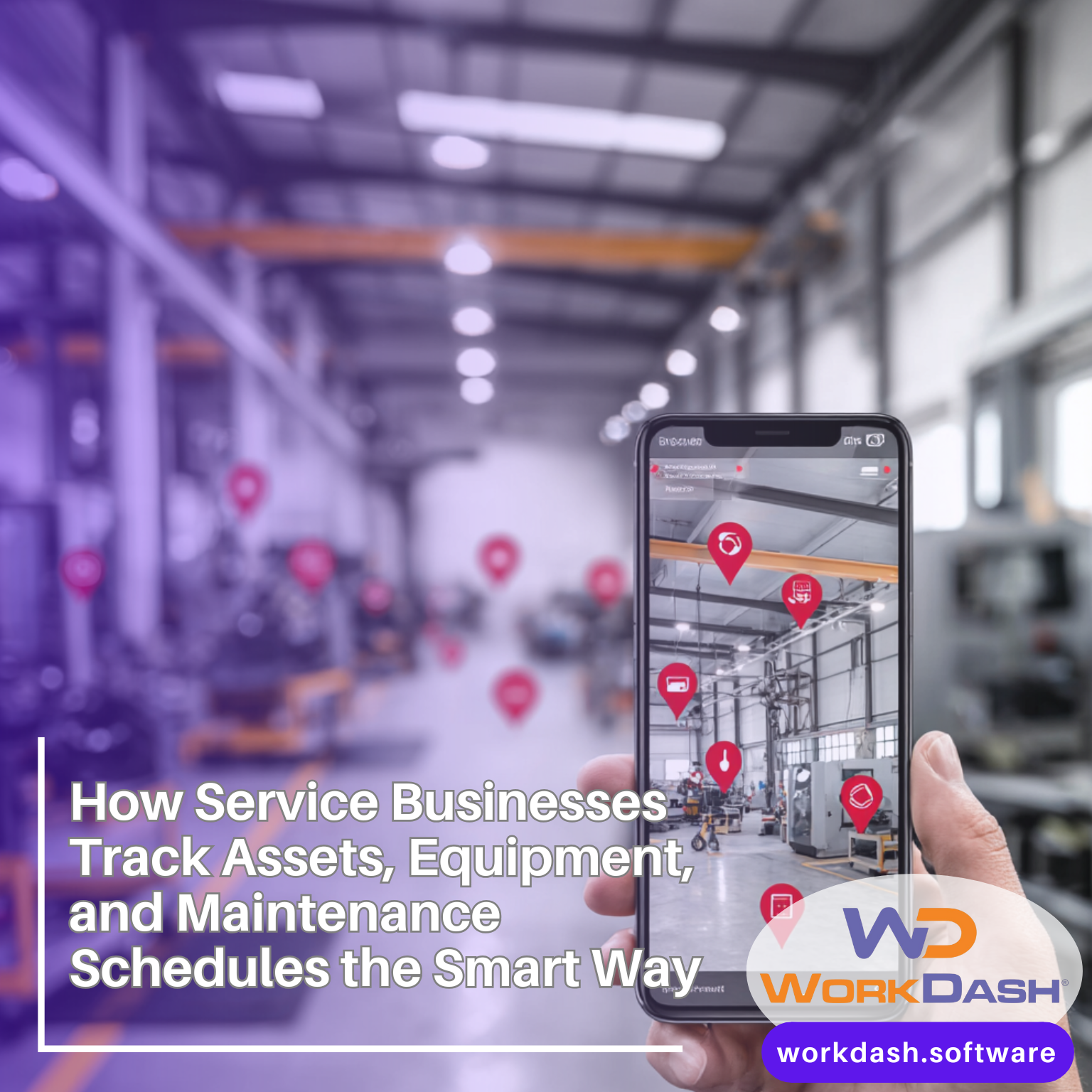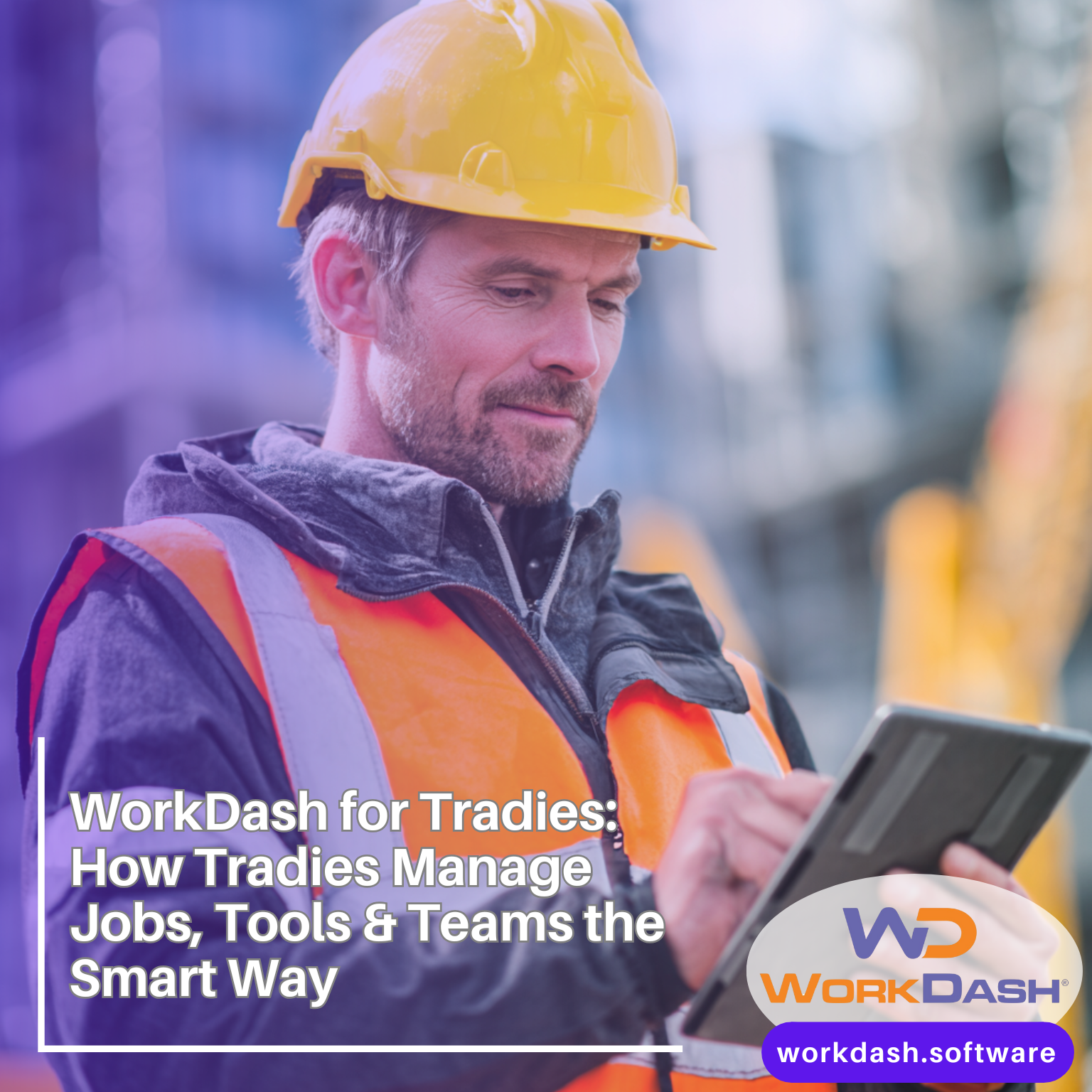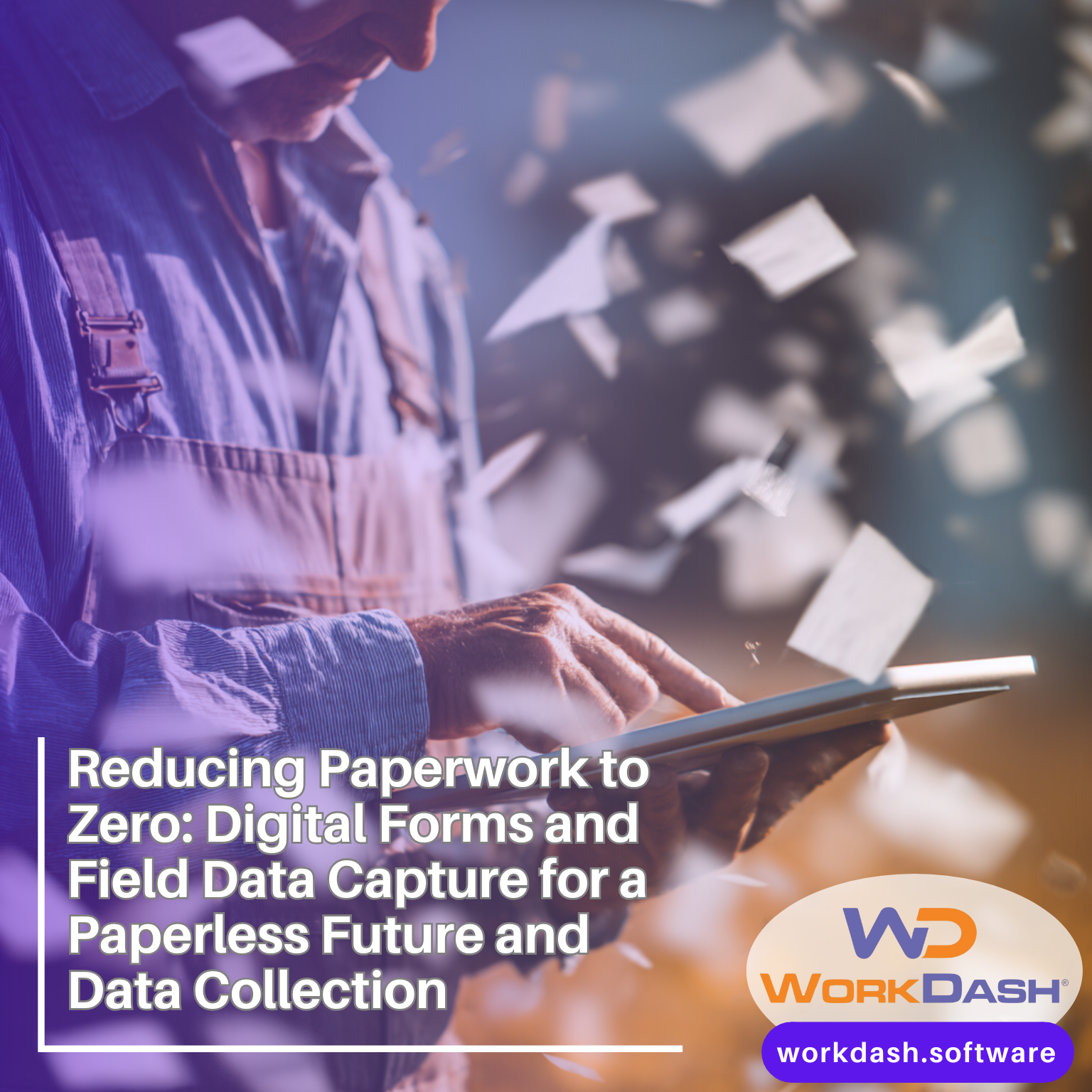Table of Contents
ERP, CRM & ROI for Small Businesses: The True Cost of Management Software in Australia (AI, ERP Cost, Budget & Business Growth)
Summary:
How much does an all-in-one platform really cost—and what’s the payback? In this buyer’s deep-dive for Australian SMEs, we unpack the visible price tag and the hidden drivers behind ERP/ CRM investments: licensing, implementation, integration, change, AI add-ons, and support. You’ll get a practical way to model ROI, budget for the full journey, and pick a platform that accelerates business growth instead of slowing it. Throughout, we connect the dots to WorkDash (the Australian all-in-one operating platform at workdash.software) so you can map numbers to outcomes and make confident decisions.
Outline
ERP vs CRM for small businesses: what problem are you paying to solve?
The “Total Cost of Ownership” (TCO) lens: beyond the sticker price
Choosing the right pricing model: license, subscription, and tiers
Building a defensible business case (and a real, cash-flowed budget)
Where AI creates value (and how to price it fairly)
The big ERP cost drivers in Australian SMEs (with real-world examples)
Estimating ROI and return on investment the practical way
Cloud vs on-prem: what cloud ERP changes in your TCO
Implementation risks: controlling ERP projects, timeline, and change costs
WorkDash for SMEs: a lighter ERP/CRM-style management software that pays back faster
1) ERP vs CRM for small businesses: what problem are you paying to solve?
Many small businesses start by asking, “Do we need ERP or CRM?” A smart answer starts with the problem. If your pain is forecasting, stock, jobs, and cross-team workflow, you’re in resource planning territory—classic ERP systems concerns. If the bottleneck is leads, follow-ups, and customer relationship management handoffs, start with CRM that connects to quoting and invoice flows. For most SMEs, the sweet spot is an integrated platform that does both without enterprise bloat.
WorkDash takes this approach: one place to streamline quoting, scheduling, stock, time, and billing—plus a simple CRM layer—so you remove manual data entry and automate routine tasks. That’s how platforms help businesses lift productivity and cash conversion without jumping to heavyweight enterprise stacks.
2) The “Total Cost of Ownership” (TCO) lens: beyond the sticker price
Sticker prices are deceiving unless you “consider the total cost.” TCO bundles everything needed to run the system well: software license or subscription, implementation, integration, data migration, training, change, ongoing support, maintenance costs, enhancements, and periodic audit needs. The true cost also includes downtime risk during cutover and the lost time from slow response time under load.
For Australian SMEs, use this simple TCO canvas:
Upfront: discovery, ERP implementation, config, modules, connectors, software license or first subscription term.
Ongoing costs: users, storage, tier upgrades, success plans, enhancements, AI usage, and vendor integration needs.
Risk buffer: contingency for additional costs, rework, and change.
By putting real numbers in each bucket, you’ll make informed trade-offs early instead of discovering them mid-project.
3) Choosing the right pricing model: license, subscription, and tiers
Vendors sell in different ways. Some charge a flat rate per company; others price per user, site, or module. A subscription model (monthly/annual) is common for cloud-based and cloud ERP platforms; perpetual licenses still appear in niche verticals. The best pricing model is the one that matches usage and business size as you scale.
Be wary of bundles that look cheap but force early tier jumps for basic features. With WorkDash, plans track common SME growth patterns (users, jobs, stock, sites) and keep integration pathways open so you don’t repaint the house when you add a team. A clean ramp makes the option cheaper in the long run because you avoid hopping tools as you grow.
4) Building a defensible business case (and a real, cash-flowed budget)
A credible business case ties spend to measurable outcomes. Model three buckets of business value:
Cost savings (license consolidation, fewer tools, less re-keying).
Revenue lift (faster quote-to-cash, better win rates, fewer write-offs).
Risk reduction (less downtime, clearer audit trails, better inventory accuracy).
Turn that into a 12- to 24-month budget with upfront investment, ongoing costs, and the expected payback. WorkDash includes an actionable dashboard for time-to-invoice, first-time-fix, on-time jobs, and stock variance—metrics you can baseline today and monitor weekly. When numbers are real-time, boards sign off faster because they can see the plan working.
5) Where AI creates value (and how to price it fairly)
Done right, AI reduces swivel-chair work and accelerates decisions. Think assisted estimating, automated notes, and anomaly detection on stock or timesheets. These automation hotspots automate routine tasks, improve operational efficiency, and cut operational costs. But AI should be priced transparently—per use or included caps—so your budget isn’t surprised by runaway tokens.
WorkDash’s AI features focus on embedded workflow help (drafting quotes, summarising job notes) and light forecasting. Because usage is visible, you can align AI spend to value, align features to business needs, and avoid surprise bills. AI should support people, not replace them; it’s a lever in your ERP strategy, not the strategy itself.
6) The big ERP cost drivers in Australian SMEs (with real-world examples)
Even with cloud erp, some drivers don’t vanish:
Integration: tying jobs, stock, payroll, and ledger. Scope creep here is a significant cost.
Data migration: cleaning customers, items, balances. It’s the quiet work that makes or breaks the go-live.
Change enablement: training and new workflows. Skimping here creates long-tail ongoing costs.
Modules: adding a module for field service or purchasing. Choose only what you need now; tailor later.
Real-world SME scenario: A service company selected a mid-market ERP solution with job costing and stock. By limiting phase one to quoting → scheduling → invoice, plus two integrations, they kept upfront spend tight. Phase two added approvals and supplier feeds as the team settled. That pacing made it seamless for staff and prevented a new ERP system shock.
7) Estimating ROI and return on investment the practical way
Keep ROI simple and comparable:
Numerator (benefit): license consolidation, time saved (x hourly rate), reduced stock variance, faster cash, fewer credits.
Denominator (cost): all-in TCO (12–24 months).
Result: ROI % and months-to-payback.
Add response time and error-rate improvements where possible. For WorkDash, typical gains come from fewer tools, fewer clicks, and faster quote-to-invoice. When automation tools and process automation replace manual data entry, SMEs see material cycle-time improvements—clear business value that’s easy to show on a dashboard.
8) Cloud vs on-prem: what cloud ERP changes in your TCO
Cloud-based ERP software shifts spending from capex to opex. You avoid servers and reduce patching, while gaining scalability and faster updates. Scalability matters: add users seasonally, add sites when you expand, and remove seats when projects end. For large enterprises, edge cases still push on-prem, but Australian SMEs win with cloud flexibility and lower maintenance costs.
WorkDash leans into this by keeping hosting, backups, and security in the subscription and letting you scale features as needs evolve. That keeps the TCO stable and protects cash in the first year—vital for businesses often operating on lean margins.
9) Implementation risks: controlling ERP projects, timeline, and change costs
ERP projects fail when scope is fuzzy. Start with a thin slice, lock a project plan, and iterate. Limit modules, set weekly demos, and measure workflow completion. Guardrails: a named owner, tight backlog, and a visible “definition of done.” For integration needs, design for the top two first and defer the rest.
WorkDash is intentionally lighter than classic ERP software solutions, so deployment is faster: import data, configure job types, set taxes, connect the ledger, test invoices, and go live. SMEs get an ERP platform feel without heavy ceremony, which lowers upfront risk and speeds time-to-value—critical for long-term success.
10) WorkDash for SMEs: a lighter ERP/CRM-style management software that pays back faster
Think of WorkDash as an SME-ready operating system rather than a sprawling enterprise suite. You purchase the software as a subscription that includes jobs, stock, scheduling, CRM, and billing; add modules when you truly need them. The platform is scalable and tailor-able—without letting customisation overrun.
Key advantages for Australian SMEs:
Integration to your ledger avoids re-keying and accelerates reconciliation.
Built-in automation and workflow reduce operational costs and errors.
SME-friendly pricing model keeps tier jumps predictable.
Local support and simple configuration mean better ongoing support and faster improvements.
Clear KPIs in an operations dashboard make informed decisions easier every week.
Deep Dive: Cost components you must price (and how WorkDash approaches each)
1) Licensing & access
Software license/subscription per user or per company; consider storage and API.
WorkDash: simple packages with transparent add-ons, so cost control is straightforward.
2) Implementation & data
Discovery, config, data migration, testing. The cost of a new ERP is often here—even for lighter tools.
WorkDash: templated setups for jobs/stock/quotes keep ERP implementation time tight.
3) Integrations
Ledger, payroll, e-invoicing, industry tools. Define “must” vs “nice to have.”
WorkDash: pre-built connectors for seamless hand-offs; design for two integrations first.
4) Change & enablement
Training, comms, and role change. Under-budgeting here inflates ongoing costs.
WorkDash: in-app guides and quick starts to reduce ramp time and make informed usage stick.
5) Operations & support
Admin time, ongoing support, enhancements, and periodic audit.
WorkDash: keeps ops simple so teams own it without consultants on speed-dial.
Pricing Pitfalls to Avoid (from real SME evaluations)
Hidden modules: a feature locked behind a higher tier inflates the plan.
Integration surprises: under-scoping connectors can double the upfront.
User creep: poorly defined roles expand seats unintentionally.
Under-resourced change: skipping training causes rework and adoption drag.
Sunk tool overlap: paying for features you already have elsewhere.
A steady ERP strategy fixes this: decide what to keep, what to retire, and how to phase features. That way, your ERP projects stay lean and your business solutions actually drive growth.
FAQ — Cost & Value
Is a consolidated platform truly cheaper?
Often. License consolidation + fewer integrations + lower downtime + faster cycles. With clean workflows and process automation, SMEs see fewer mistakes and better margins—making a consolidated option cheaper in the long run.
What about CRM cost vs ERP cost?
If sales leakage is the problem, start with CRM and quoting. If stock/jobs/finance are chaotic, start with ERP-like functions. WorkDash covers both so you don’t pay twice.
Do vendors ever really charge a flat rate?
Some niche tools do, but most modern platforms use per-user or volume pricing. The trick is matching price to value creation in your specific organisation.
Can lighter platforms serve large enterprises?
They can augment, but enterprise compliance and scale may require deeper ERP software. For SMEs, WorkDash delivers the 80/20 quickly so teams can transform your business without ceremony.
A Simple Calculation You Can Reuse
Current cost of the stack (per year): tools + integration + admin time + errors (credits/write-offs).
Proposed cost (per year): platform subscription + two key integrations + enablement.
Annual benefit: time saved + reduced stock variance + faster cash + fewer errors.
ROI = (Benefit − Cost) / Cost. Add months-to-payback to show board-readiness.
Use user feedback during the pilot to validate the numbers and refine the business case. That’s how you make informed approvals without guesswork.
“Fit” Checklist — Does the platform fits your business?
Matches business size and keeps options scalable.
Delivers seamless quote → schedule → invoice → ledger.
Supports automation in the workflows you run daily.
Offers clear subscription terms and growth-friendly tiers.
Keeps integration choices open without custom code sprawl.
Provides reports your team will use to make informed calls weekly.
Includes sane ongoing support so you don’t stall on small changes.
WorkDash ticks these boxes by focusing on the everyday flows that matter and avoiding the “everything and the kitchen sink” trap.
For Boards & Owners: When a bigger price is actually better
Sometimes a higher-priced plan with stronger automation and support is more profitable because it removes friction that’s costing you every day. If a plan reduces cycle time, error rates, and rework, it can be cheaper in the long run despite a higher line item. The point of ERP, CRM, and management software isn’t lower spend—it’s higher velocity, better cost control, and fewer blockers to business growth and long-term success.
Bullet-Point Summary — What to Remember
Price the Total Cost of Ownership (TCO): license/subscription, implementation, integration, data migration, change, ongoing support, maintenance costs, risk.
Build a crisp business case tied to cash: cycle time, error rates, stock variance, and faster invoice collection.
Match pricing model and tiers to business size and growth—avoid forced upgrades.
Use AI where it saves time in workflow; keep usage transparent so your budget stays predictable.
Control ERP cost drivers: limit module creep, phase ERP projects, and prioritise the top two integrations.
Choose cloud ERP/cloud-based platforms for agility, updates, and lower maintenance costs.
Calculate ROI with a simple benefits vs all-in-TCO model; share results in a real-time dashboard.
Right-size the tool: pick a platform that fits your business, not one that assumes enterprise complexity.
Remember: the best solution is the one your team uses daily—management software that removes work, not adds it.
WorkDash gives SMEs an integrated ERP/CRM-style environment with fast payback—clear reports, fewer tools, and the confidence to make informed decisions.
Ready to model your numbers with a WorkDash consultant and see your true cost and ROI in context? Bring one month of operational data—we’ll build a side-by-side plan that’s grounded, transparent, and ready for board approval.





